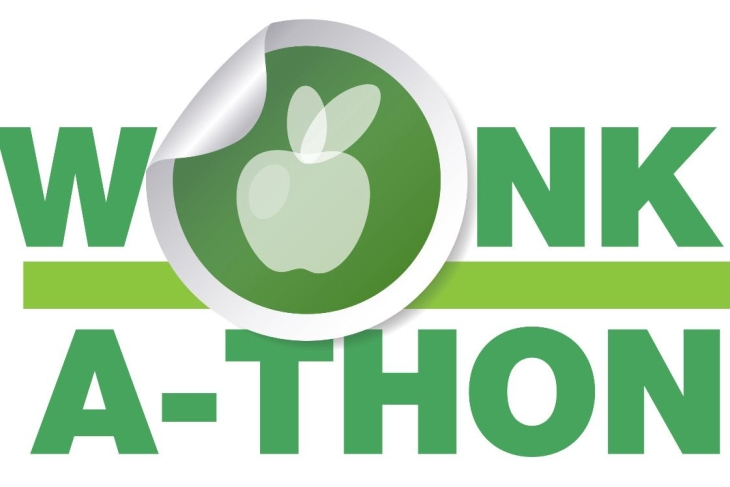Editor’s note: This essay is an entry in Fordham’s 2022 Wonkathon, which asked contributors to address a fundamental and challenging question: “How can states remove policies barriers that are keeping educators from reinventing high schools?” Learn more.
Jobs for the Future (JFF) is pleased to see the Big Blur cited in the Wonkathon invitation. Our contribution—in keeping with Fordham’s implicit encouragement to break the rules—focuses on two policy proposals from the comprehensive systems change policy framework that JFF has created to move states toward the Big Blur. It also comes from the Big Blur team, not a single person.
A premise of the Big Blur is that by transforming and integrating our siloed systems of K–12, postsecondary, and workforce development, we could essentially guarantee all young people routes to quality jobs and careers, continued education, apprenticeship, and other work-based learning as the new normal in public education.
In order to make good on this guarantee, states must create the policy conditions needed to move toward one system that seamlessly serves youth and young adults along their college and career pathways, from grades eleven through grade “fourteen.” This new system calls for a wholly new governance, funding, and staffing model.
Two of the key levers in moving towards a fully blurred system are:
- A single funding stream dedicated to the education, training, and career development of sixteen- to twenty-four-year-olds; and
- One credentialing system for instructors for grades eleven through fourteen, creating a teaching force that can graduate all students with at least an associate degree and/or a high-value, industry-based credential.
These two policy levers are defined within The Big Blur policy framework developed to help states and policymakers better understand the progression towards a transformed system. The levers are:
- Incentives for new financing and accountability systems.
- Close alignment between high schools, colleges, and labor markets.
- Stronger approaches to governance that provides overarching decision-making authority for education, workforce, and economic development policy.
- Staffing models that are specially designed for new institutions.
States can self-assess their current policies against these levers by determining where their policies fall on the continuum. Each lever describes all four stages from fragmented, to coordinated, to integrated, and then finally to transformed. With this framework, states can benchmark their policy and advocacy efforts over time. For example, the descriptions below from the state policy framework describe what “transformed” funding and staffing models could look like.
Single Funding Stream. State provides new incentives for financing, such as having state entitlement programs extended through grade 14 with dedicated funding streams for sixteen- to twenty-four-year-olds. (Note in practice, this could include approaches like extending per pupil funding for high school students to age 24 and braiding with other funding to ensuring grades thirteen and fourteen are tuition- and fee-free, with free or reduced costs for food, transportation, etc.)
A new funding stream would provide young people with free education and training (including iterative and intentionally designed work-based learning, apprenticeship, and internship opportunities) through grade fourteen. A single funding stream may be the most powerful lever to undergird a new system since decades of experience attempting to “braid” funding streams (a euphemism for making 2 plus 2 equal 5) shows that, while it is possible, it overly relies on agreement and coordination within and across existing silos in education, labor, and economic development.
Funding streams that fully bridge K–12 to postsecondary would build on what is already happening in states like CO with its ASCENT program and MA with its Early College Promise pilot, which provide a thirteenth year of funding to LEAs to support attainment of college degrees by their students. Both efforts advance evidenced-based approaches that are starting to blur how education and career training is currently funded. Another example is the longstanding work of the Delaware Pathways Initiative that braids funding from ESSR, Perkins, WIOA, and philanthropic sources in line with agreed upon metrics for youth and young adult education and career attainment.
Staffing Transformation. State has sufficient staff serving 11–14 institutions, and they are all certified to teach and counsel across those grades. If applicable, one organization offers union representation. State requires streamlined, high-quality, and sustained career and academic counseling through grade fourteen. State accredited-approved teacher certification processes enable industry experts to have the flexibility to teach relevant career-oriented skills and courses for grades 11–14 (including dual enrollment and career and technical education), and provide effective career counseling, coaching, and mentorship.
In addition to offering students continuous and seamless support through crucial transition years, a new instructor credentialing system would also address several issues facing both the K–12 and postsecondary systems. A new partnership and credentialing would offer unions and regional accreditors an opportunity to address teacher shortages in K–12, as well as a shortage of K–12 teachers currently credentialed to teach dual-credit coursework, including CTE. It would also offer an opportunity for the many adjunct higher education faculty to be employable across a wider range of positions, most with better compensation. Teaching professionals need training that honors and respects competency in pedagogical strategies grounded in an understanding of stages of cognitive development relevant to sixteen- to twenty-four-year-olds, as well as industry-specific content knowledge. They also need the opportunity to co-design a new vision for preparing youth for both opportunities to contribute to an ever-evolving economy and for more equitable economic advancement,
This is a moment where the needs and interests of K–12, postsecondary, and workforce are aligned like never before. State policymakers must leverage this moment to remove policy barriers to reinvention and build on impactful efforts like college promise programs, early college high schools, and P-TECH, for example, to create a system that serves all youth and young adults, rather than doubling down on one that allows siloed systems of inequity to persist.

